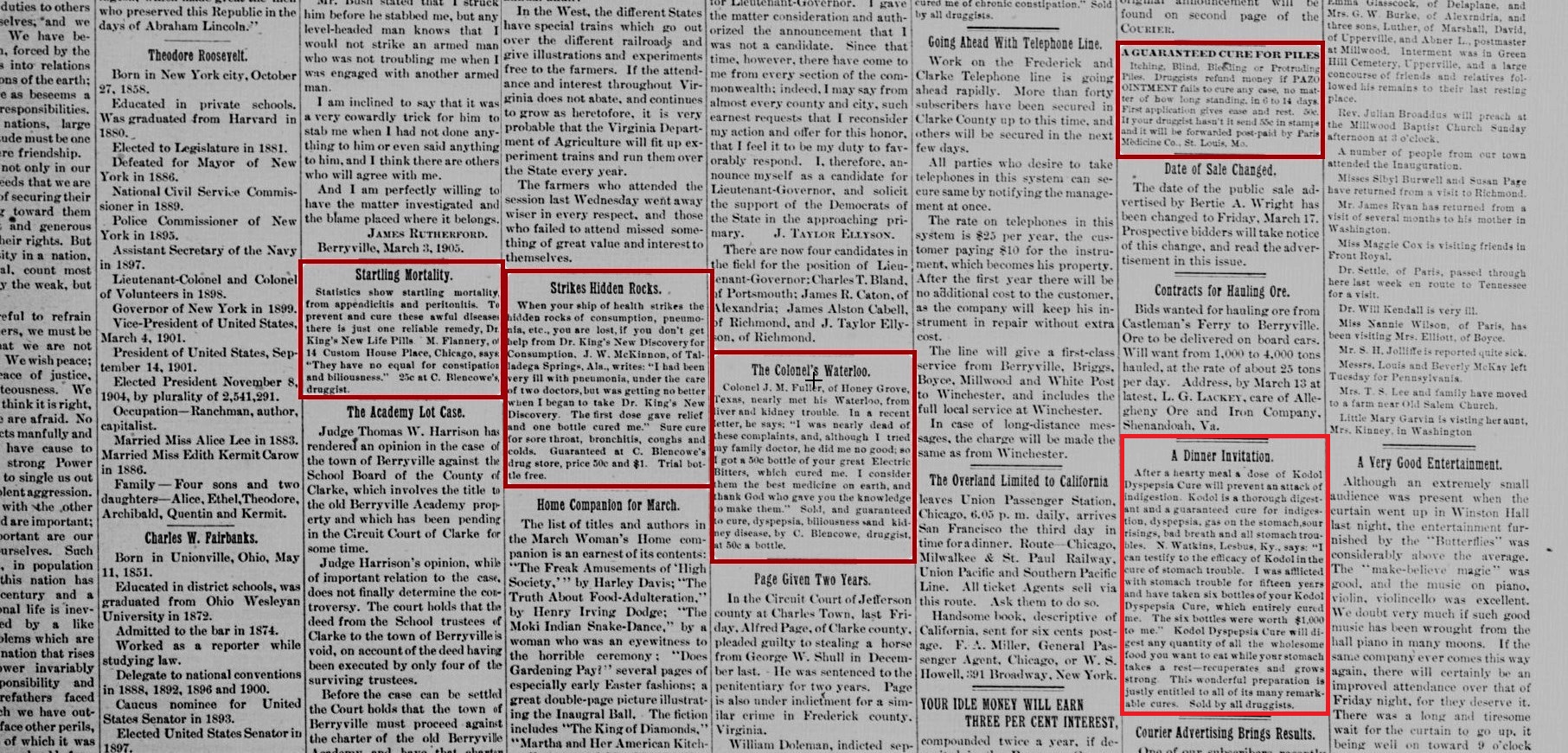The iron law of journalism: you can’t pursue civic virtues if you don’t make money. From our digital archive Virginia Chronicle (now at almost 700,000 pages!) a front page selected almost at random from 1905, Berryville’s Clark Courier, March 8. Advertisements are marked:
The intent is to blend in with the prevailing graphics of the page. The eye drifts easily from Theodore Roosevelt’s inauguration to a guaranteed cure for constipation and biliousness (happily we were unable to verify or falsify such claims).
For the following, don’t think “old school” vs. “new school” but rather instead “same school.” A screen shot from today’s New York Times web page:
How about we move one of those ad rectangles just a little closer to the others? Yes, lets:
With the print versions of newspapers and magazines under a continual financial siege and their online editions still searching for a solid profit foundation, questions of news to ad ratio, design and general rules of cohabitation will persist and be debated internally with increasing intensity.
Entry into the Toyota ad posted on the Times reveals webpages resembling a kind of Mobius strip of information and embedded advertising messages. All this trouble just for a little…attention, the first welcome port of any passage to profit.
Now, please direct your attention to a newspaper out of the Valley of Virginia, 14 miles south of Staunton, the Greenville Banner of a small town of the same name, population 162, 250, 832 in 1810, 1928 and 2010, respectively.
Special distinction, we believe, is due for a motto delightful for its bluntness and freedom from the usual 19th century pieties:
Our gratitude to owner, editor J. B. Burwell for surfacing expressing a sentiment suppressed by most others. He was not rewarded. In July of 1884, the Banner went up for sale:
It is difficult to determine exactly when the new owner appears. There is, however, one indication of new management; the motto vanishes from the masthead in the November 12 edition of 1884:
Possibly it struck too baffling a tone for the time. In any case, the Banner’s prospects were not promising. An advertising base diverted by the Staunton Spectator to the north and the Lexington Gazette further south likely exhausted available revenue. After a publishing span of a few months shy of three years, Greenville lost its newspaper early in 1885. The motto is currently unattached and ready for use.
Circulation high or low, a tough business, then and now.












